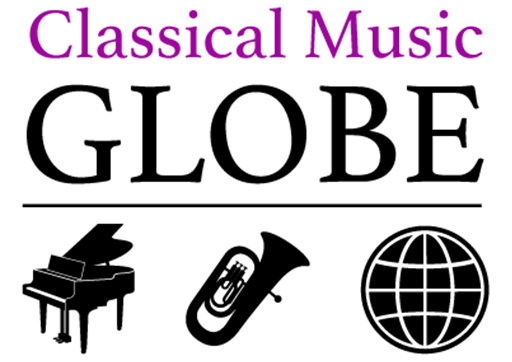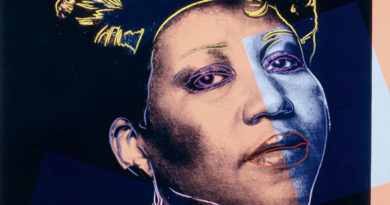David Olney and the Poetry of Life and Death
Reflecting upon the career of this Nashville luminary, gone too soon at age 71, through an insightful 2007 interview

Americana legend David Olney passed away on Saturday night, January 18th, 2020 while performing onstage at the 30A Songwriter Festival alongside fellow scribes Amy Rigby and Scott Miller.
The critically-acclaimed singer / songwriter had released nearly two-dozen albums over the past 40 years, and had material recorded by artists like Emmylou Harris, Steve Earle, and Linda Rondstadt. Olney was 71 years old.
I met David Olney back around 1981 when I returned to Nashville after living for 2 1/2 years in the Detroit area, but I’d heard of him earlier and thought of him as one of the pioneers (with his band the X-Rays) of Nashville’s nascent rock scene. I was shocked to hear of his passing at such a relatively young age. I had the privilege of writing about David and his music more than a few times during the years, and was always awestruck not only by his talent, but his humility and humor. The 2007 interview reprinted below has been excerpted from my 2012 book The Other Side of Nashville: An Incomplete History and Discography of the Nashville Rock Underground, 1976-2006.

David Olney Interview
Olney’s entry into music was much like that of many a young man and woman during the 1960s. “It was something that I could do,” he says, “and there weren’t a whole lot of those things. The times were pretty weird, the wild ‘60s, and that was the thing that I could count on.” Born in Rhode Island, Olney began his career playing guitar, eventually moving to North Carolina to attend college.
“I got into music really serious when I was in North Carolina,” he remembers, “and a friend of mine, Bland Simpson, went up to New York and got some interest up there, so he called me up to play in the band. We did a record, but nothing much happened, so we were back in North Carolina.” That band, named Simpson, would record a single album with Rick Derringer and Olney on guitars, Bland Simpson on piano, and Eric Weissberg on fiddle.
“I went down to Atlanta to be in the Atlanta Children’s Theater,” says Olney. “I was writing songs, and at some point it seemed the time to make a move, musically, and Nashville was the closest place. I knew a couple of people, so I had a couch to crash on. That was in 1973.” Olney arrived in the Music City at the tail end of the “cosmic cowboy” phase of outlaw country music. “Waylon Jennings was hitting big, so it was still going on,” remembers Olney. “I always thought that the gas crunch of ‘73, the first gas crisis, kind of shut things down. I don’t think the business felt like it could take chances on the crazy people. You couldn’t waste a lot of money on somebody that was interesting, which was too bad.”
Arriving In Nashville
The local music scene had barely begun when Olney re-located to Nashville. “I’m not sure I could describe the ‘big scene’,” says Olney, “because I was just trying to make my way. I found this place, Bishop’s Pub, which is now the Tin Angel, at 34th and West End…they had an open stage where you could go in and play and pass the hat. So I glommed onto that, and built my days around going over there and playing. I learned a lot about how to deal with an audience, and all that kind of stuff. Mostly, if I wrote a song, I had a place to go and put it out in public and see if it worked.”

“As far as rock ‘n’ roll,” Olney remembers, “I was bussing tables over at a place called Jock’s, later on Mario’s, and it was Muhlenbrinks for a while…every now and then, John Hiatt had a rock ‘n’ roll band, and he’d play there, and somewhere around that time there was a band called Peace & Quiet, and they played sort of a soft rock kind of thing. Other than that, there just wasn’t any rock ‘n’ roll, basically. It was kind of an era where writing the songs was the big thing, not so much the performance of them.
“There were others…Marshall Chapman was playing at Steak & Ale or something like that, but I was unaware of it at the time,” he says, “I just knew my little corner that I worked.”
By 1977, Olney had put together his first band. “I thought it was going to be a country band,” he says, “it was odd, because I couldn’t rehearse with the band all together in one room. It turned out that I could only rehearse with them separately, so I didn’t know what it was going to sound like until we played our first gig, which was out at Rock Harbour [in West Nashville].”
Dave Olney & the X-Rays
“Bobby Bradford, of the Bobby Bradford Blues Band…they had a really good following, and the band was more important than people give them credit for…it was his club, and we played out there. They had a dog that was wandering around, and I remember getting ready to play the first song, and I stepped on some dog shit that was on the stage. I didn’t know, and we started to play and I was smelling this outrageous smell…I just said ‘stop, this is not the way I’m getting this thing off the ground’…so we cleaned it up and started again. We had a fiddle player in the band, and I started jumping around and rockin’ out, so the fiddle player quit immediately and it was a rock ‘n’ roll band from then on.”
Thus was born Dave Olney & the X Rays, one of the great unsung bands of the early Nashville rock scene. “There weren’t but three or four people in the audience,” he remembers, “there really wasn’t a scene or anything.” The band performed frequently around town, though, gradually evolving as members came and went. “Jimbo Walsh was playing drums,” says Olney, “Steve Runkel was playing bass…Steve was playing in a band called the Contenders, but I guess that they had already bitten the dust. Granny Grantham also played bass during that period, they were both kind of in and out, but Walsh played drums, and Steve Clark played guitar. Somewhere down the line we got Kenny Moore to come up from North Carolina to play keyboards.”
VIDEO: David Olney & The X-Rays Live at Austin City Limits 1982
“Rounder had expressed some interest in me as a folk artist,” says Olney. “They heard the band and thought that it was interesting, so they were in the background, early on. There was an exodus from the band; Steve Clark left, Jimbo left, the band ended up being Tommy Goldsmith on guitar, John Owen on bass, Rick Rowell on drums, Kenny Moore on keyboards, and me…that was the band that ended up getting the Rounder Record deal.”
Another project that Olney got involved with during the 1980s was the Nashville Jug Band. “Ed Dye would put these shows on, I believe that he did them at Springwater…which was developing into the center of the universe, which is kind of peculiar, but there you go…and Ed was bartending there. He’d but together these bluegrass throw-together things with whoever was in town, and there were these incredible people…there was Sam Bush (of New Grass Revival), Roy Huskey, Jr., just some really good players. Pat McLaughlin was in there, and I just kind of wheedled my way in, playing second-rate harmonica.”
Olney’s Influences
One of the things that makes Olney’s songwriting as rich and smart as it is are the myriad of influences he incorporates into his work. “As far as musicians, Jimmy Reed…my older brother would bring these records home of people I’d never heard of, and I remember Jimmy Reed struck me,” he says. “From folk music, it seems almost embarrassing now to say Peter, Paul and Mary, and Joan Baez was very good. Dylan kind of re-invented the whole thing. Beyond all that, for my generation, rock ‘n’ roll was background music for our lives. Ray Charles, I remember how much he moved me, and Roy Orbison.”
VIDEO: David Olney and Sergio Webb perform “Tex’s Blues” by Townes Van Zandt
Olney’s storytelling style was heavily influenced by the great Texas songwriter Townes Van Zandt. “I was living in Atlanta in ‘72, and I got very little work playing,” he remembers. “I stumbled onto this job, playing in Athens, Georgia this one night opening for this guy, Townes Van Zandt, who I didn’t know anything about. I’d written a few songs, maybe four or five at that time, but I they were efforts to sound like somebody else, basically. I didn’t have a direction, and then I hear those songs that night, and it was mind-boggling to me. Everybody’s heard ‘Pancho & Lefty’ enough that it’s hard to remember how amazing it was to hear that song the first time. Really, the only other model was Bob Dylan, and you weren’t going to ‘out Bob Dylan’ Bob Dylan.”
“At the time, Townes’ lyrics were very abstract, it really wasn’t the way it was going, and the images were completely understandable.”Pancho & Lefty,” you can understand the song, yet the story is just so weird that I said ‘OK, that’s the way to go.’ He had a huge influence on my writing,” says Olney. “I didn’t get to know him until after I moved to Nashville, and then I went down to play in Houston and he was down there. I hung around for a week, and he was just so crazy I thought ‘I can’t keep up with this guy.’ I consciously didn’t get to know him because I couldn’t physically keep up with him, and the people around him, he was the center of their world. I wanted to keep my options open. It wasn’t until 1976, when he came to town and I got to know him and he was a good, funny guy whose writing I just really admired. I never knew him as well as Guy Clark or Steve Earle; I’d say that our friendship was based on music.”
While he hasn’t become rich, or even famous, Dave Olney is well-respected in the industry and has won his share of critical acclaim. It seems that he’s long since accepted his role as artist. “I used to be pissed-off about not being more famous,” Olney says of his career. “But I got to see the world in an intimate kind of way, and that’s OK.”
VIDEO: David Olney at 30A Songwriters Festival 1/18/20




